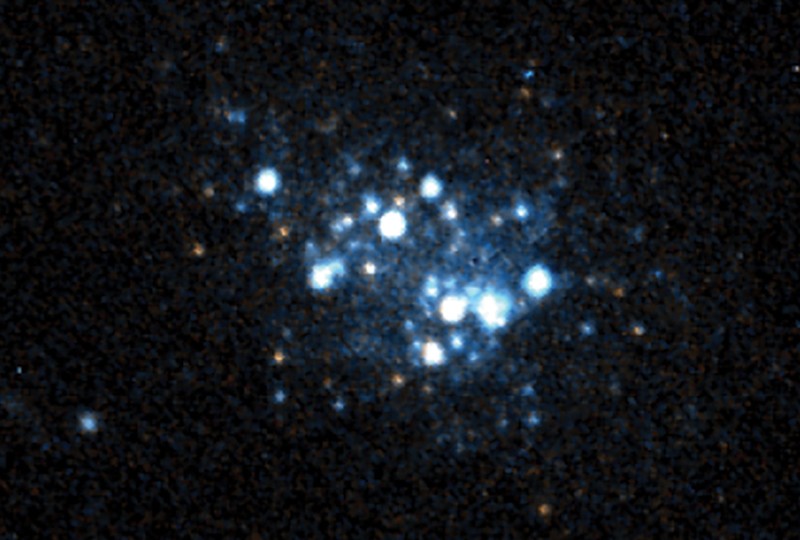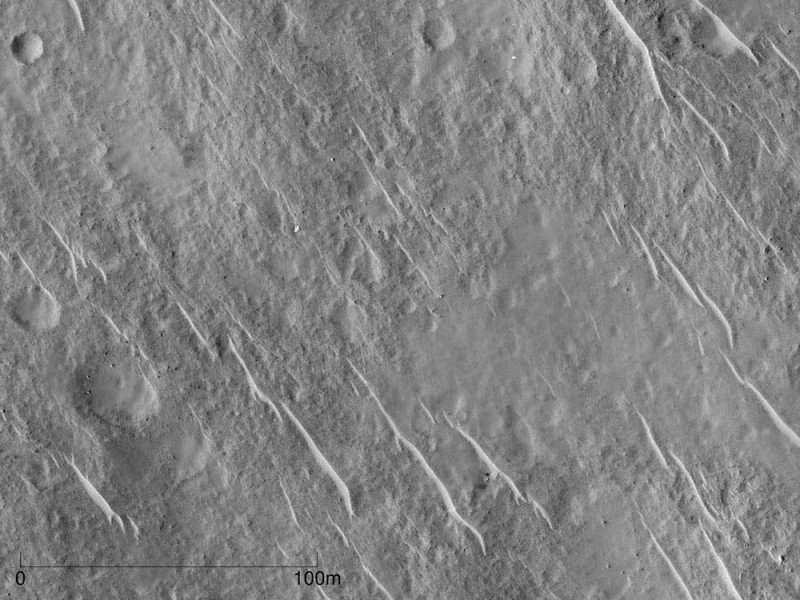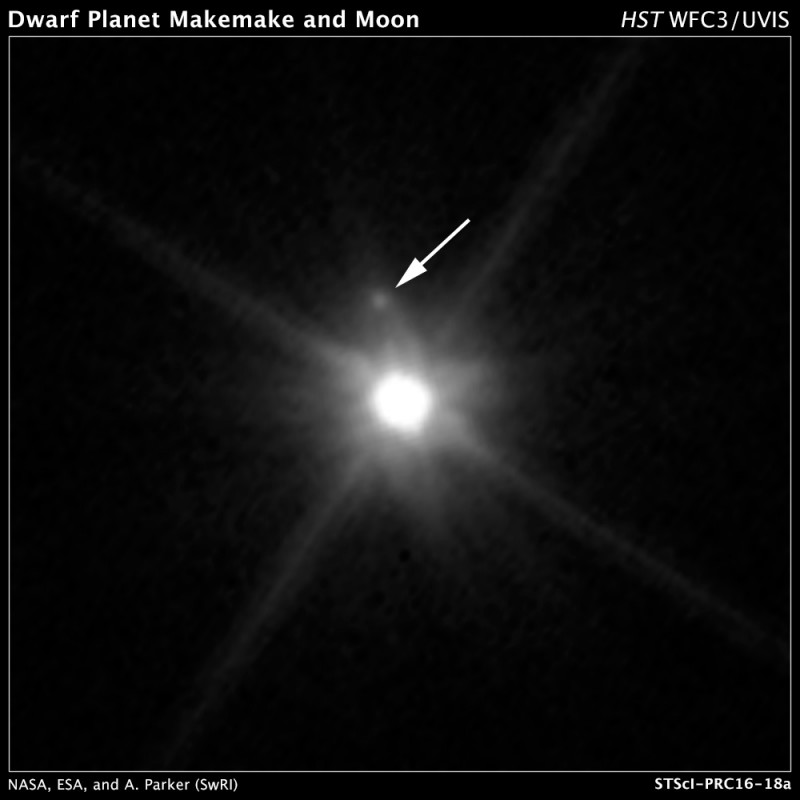Blog
Mars, Earth, Sun Set For Opposition Alignment May 22nd
Thursday, May 19th 2016 11:18 PM
Artist's concept of Mars Opposition. The distances between the sun, the planets, and the distant nebula are not to scale.
Last week, Mercury stole the show. Now it's Mars' turn.
On Sunday morning, Mars, Earth and the sun will line up perfectly in the sky. This once-every-two-years event is called Mars opposition. That's because Mars and the sun will be on opposite sides of Earth.
Right now, Mars is about 48 million miles from us, coming ever closer until May 30, when the red planet passes within 47 million miles. That will be Mars' closest approach in 10 1/2 years. In 2018, Mars will get a lot chummier, passing within a mere 36 million miles.
The modern-day record of 34.6 million miles between Earth and Mars was set in 2003. That won't be surpassed until the year 2287, according to NASA.
At the other end of the scale, Earth and Mars can be as much as 249 million miles apart when they wind up on opposite sides of the sun every couple years.
Like all the planets i...
Read More
Read More
Small Blue Galaxy Has Lowest Level of Heavy Elements in a Star System
Wednesday, May 18th 2016 07:10 PM
An image of the galaxy AGC 198691 (nicknamed Leoncino, or "little lion") taken by the Hubble Space Telescope.
Credit: Photo by NASA; A. Hirschauer & J. Salzer, Indiana University; J. Cannon, Macalester College; and K. McQuinn, University of Texas
A faint blue galaxy about 30 million light-years from Earth and located in the constellation Leo Minor could shed new light on conditions at the birth of the universe.
Astronomers at Indiana University recently found that a galaxy nicknamed Leoncino, or "little lion," contains the lowest level of heavy chemical elements, or "metals," ever observed in a gravitationally bound system of stars.
The study appears today in the Astrophysical Journal. The lead author on the paper is Alec S. Hirschauer, a graduate student in the IU Bloomington College of Arts and Sciences' Department of Astronomy. Other IU authors on the paper are professor John J. Salzer and associate professor Katherine L. Rhode in the Departme...
Read More
Read More
Soap Bubble Shape Gives NGC 7653 Its Name
Friday, May 13th 2016 08:12 PM
The Bubble Nebula, also known as NGC 7653, is an emission nebula located 11,000 light-years away. This stunning new image was observed by the NASA/ESA Hubble Space Telescope to celebrate its 26th year in space.
Credit: NASA, ESA, Hubble Heritage Team
For the 26th birthday of NASA's Hubble Space Telescope, astronomers are highlighting a Hubble image of an enormous bubble being blown into space by a super-hot, massive star. The Hubble image of the Bubble Nebula, or NGC 7635, was chosen to mark the 26th anniversary of the launch of Hubble into Earth orbit by the STS-31 space shuttle crew on April 24, 1990.
"As Hubble makes its 26th revolution around our home star, the sun, we celebrate the event with a spectacular image of a dynamic and exciting interaction of a young star with its environment. The view of the Bubble Nebula, crafted from Wide Field Camera 3 images, reminds us that Hubble gives us a front-row seat to the awe-inspiring universe we live in,” sa...
Read More
Read More
1,200+ New Planets Confirmed Using New Technique Verifying Kepler Data
Friday, May 13th 2016 07:39 PM
Scientists from Princeton University and NASA have confirmed that 1,284 objects observed outside Earth's solar system by NASA's Kepler spacecraft are indeed planets. Reported in The Astrophysical Journal on May 10, it is the largest single announcement of new planets to date and more than doubles the number of confirmed planets discovered by Kepler so far to more than 2,300.
The researchers' discovery hinges on a technique developed at Princeton that allows scientists to efficiently analyze thousands of signals Kepler has identified to determine which are most likely to be caused by planets and which are caused by non-planetary objects such as stars. This automated technique — implemented in a publicly available custom software package called Vespa — computes the chances that the signal is in fact caused by a planet.
Scientists from Princeton University and NASA have confirmed that 1,284 objects observed outside Earth's solar system by NASA...
Read More
Read More
Mercury a Little Black Dot as It Crosses Face of the Sun
Wednesday, May 11th 2016 06:47 PM
This composite image of Mercury’s journey across the sun was created with visible-light images from the Helioseismic and Magnetic Imager on SDO.
For the first time in 10 years, Mercury passed directly between the Earth and sun on Monday, resembling a black dot against the vast, glowing face of our star.
Many stargazers turned to the Internet as NASA provided close-to-real-time images of the 7½-hour trek, courtesy of the Solar Dynamics Observatory.
Although the solar system's small, innermost planet appeared to be trudging along, it actually was zooming past the sun at 106,000 mph.
The cosmic show — which began at 7:12 a.m. EDT — was visible from the eastern U.S. and Canada, as well as Western Europe, western Africa and most of South America. Those places were privy to the entire event. The audience grew as the sun rose across North America, revealing Mercury's relatively rare transit. I...
Read More
Read More
Mercury to Transit the Sun May 9, 2016
Friday, May 6th 2016 06:32 PM
What is a Mercury Transit?
Watching the planets cross the sky can be a beautiful site. Their dance through the constellations has brought awe and wonder to those who have witnessed them. However, two planets in our solar system put on a much more rare display called a transit.
A transit is when a planet crosses the disk of the Sun from the point of an observer. From Earth, only Mercury and Venus can be observed doing this. Venus made its latest historic transit across the Sun’s disk on June 5/6, 2012. If you missed this one, you will have to wait until 2117 to see another Transit of Venus.
Mercury transits are slightly less rare, the last one happening in 2006. Now, 10 years later, we are going to witness yet another transit of Mercury on Monday, May 9th 2016! This celestial event is a must see for anyone interested in space or nature. Transits have given us many insights into the size and orbital mechanics of our solar system.
There are a...
Read More
Read More
Mars’ surface revealed in unprecedented detail
Friday, April 29th 2016 10:29 PM
Beagle-2 landing site.
Credit: Yu Tao and Jan-Peter Muller, UCL
Exciting pictures of the Beagle-2 lander, the ancient lakebeds discovered by NASA’s Curiosity rover, NASA’s MER-A rover tracks and Home Plate’s rocks have been released by the UCL researchers who stacked and matched images taken from orbit, to reveal objects at a resolution up to five times greater than previously achieved.
A paper describing the technique, called Super-Resolution Restoration (SRR), was published in Planetary and Space Science in February but has only recently been used to focus on specific objects on Mars. The technique could be used to search for other artefacts from past failed landings as well as identify safe landing locations for future rover missions. It will also allow scientists to explore vastly more terrain than is possible with a single rover.
Co-author Professor Jan-Peter Muller from the UCL Mullard Space Science Laboratory, said: “We...
Read More
Read More
Hubble Discovers Moon Orbiting the Dwarf Planet Makemake
Thursday, April 28th 2016 11:34 PM
This Hubble Space Telescope image reveals the first moon ever discovered around the dwarf planet Makemake. The tiny moon, located just above Makemake in this image, is barely visible because it is almost lost in the glare of the very bright dwarf planet. The moon, nicknamed MK 2, is roughly 100 miles wide and orbits about 13,000 miles from Makemake. Makemake is 1,300 times brighter than its moon and is also much larger, at 870 miles across.
Peering to the outskirts of our solar system, NASA's Hubble Space Telescope has spotted a small, dark moon orbiting Makemake, the second brightest icy dwarf planet — after Pluto — in the Kuiper Belt.
The moon — provisionally designated S/2015 (136472) 1 and nicknamed MK 2 — is more than 1,300 times fainter than Makemake. MK 2 was seen approximately 13,000 miles from the dwarf planet, and its diameter is estimated to be 100 miles across. Makemake is 870 miles wide. The dwarf planet, discovered in 20...
Read More
Read More
Dark Matter Dwarf Galaxy Found Hidden in Spacetime Warp
Wednesday, April 20th 2016 12:49 AM
Composite image of the gravitational lens SDP.81 showing the distorted ALMA image of the more distant galaxy (red arcs) and the Hubble optical image of the nearby lensing galaxy (blue center object). By analyzing the distortions in the ring, astronomers have determined that a dark dwarf galaxy (data indicated by white dot near left lower arc segment) is lurking nearly 4 billion light-years away.
Y. HEZAVEH, STANFORD UNIV.; ALMA (NRAO/ESO/NAOJ); NASA/ESA HUBBLE SPACE TELESCOPE
There are few things that get us more excited than the mysteries of dark matter and the warping of spacetime, but when you have both wrapped into a stunning image of an Einstein ring, you know you’re onto something special.
In 2014, the Atacama Large Millimeter/submillimeter Array (ALMA) in Chile observed a striking cosmic quirk during its Long Baseline Campaign. It saw a distant galaxy, warped beyond recognition, by the gravitational field of a massive galaxy in...
Read More
Read More
NASA: Moon Wandered Off Axis Billions of Years Ago
Saturday, April 16th 2016 09:33 PM
A 3D cross section of the moon and resulting lunar polar wander. (James Keane, U of Arizona)
A new study published today in Nature reports discovery of a rare event — that Earth’s moon slowly moved from its original axis roughly 3 billion years ago.
Planetary scientist Matthew Siegler at Southern Methodist University, Dallas, and colleagues made the discovery while examining NASA data known to indicate lunar polar hydrogen. The hydrogen, detected by orbital instruments, is presumed to be in the form of ice hidden from the sun in craters surrounding the moon’s north and south poles. Exposure to direct sunlight causes ice to boil off into space, so this ice — perhaps billions of years old — is a very sensitive marker of the moon’s past orientation.
An odd offset of the ice from the moon’s current north and south poles was a tell-tale indicator to Siegler and prompted him to assemble a team of experts to take a closer...
Read More
Read More









